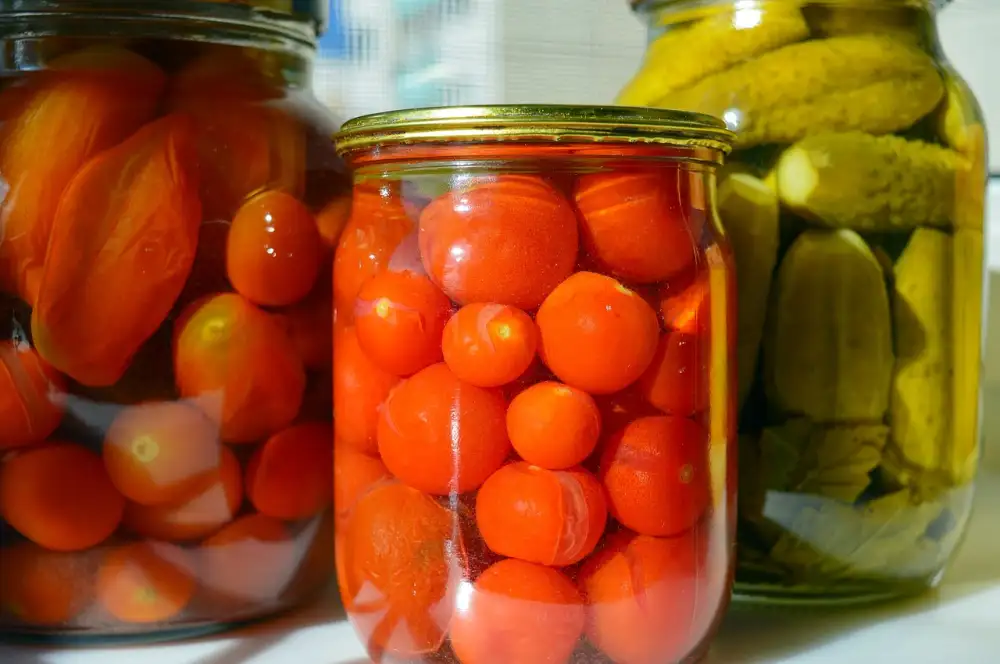Preserve Your Food with Canning Salt: Unlock the Secrets of Long-lasting Flavor

- Understanding the importance of using canning salt for long-term food storage
- The unique properties of canning salt that make it ideal for preserving food
- Exploring the different types of canning salt available in the market
- Tips for properly using canning salt in the canning process
- Addressing common misconceptions about canning salt and its usage
- The benefits of using canning salt over regular table salt in food preservation
- How to store canning salt to maintain its quality and effectiveness
Canning salt is a key ingredient in the world of food preservation. It plays a crucial role in extending the shelf life of various foods, allowing you to enjoy their flavors long after their harvest or purchase. Whether you're a seasoned canner or just starting out, understanding the importance of canning salt is essential for successful food preservation. In this article, we will delve into the unique properties of canning salt, explore its different types, and provide tips for using it effectively in the canning process. Get ready to unlock the secrets of long-lasting flavor with canning salt!
Understanding the importance of using canning salt for long-term food storage
Understanding the importance of using canning salt for long-term food storage is essential for anyone looking to preserve their food. Canning salt, also known as pickling salt, is specifically designed for use in preserving foods through the canning process. Unlike regular table salt, which often contains additives like iodine or anti-caking agents, canning salt is pure sodium chloride. This purity ensures that it does not affect the taste or color of the preserved food and helps maintain its quality over time. By using canning salt, you can be confident that your preserved foods will retain their flavor and texture for extended periods, allowing you to enjoy them long after harvest season has ended.
The unique properties of canning salt that make it ideal for preserving food
Canning salt possesses unique properties that make it an ideal choice for preserving food. Unlike regular table salt, canning salt is free of additives such as iodine or anti-caking agents, which could affect the taste and quality of preserved foods. Its fine texture allows for easy dissolving, ensuring even distribution throughout the preserved product. The absence of impurities in canning salt prevents discoloration and cloudiness in canned goods, resulting in visually appealing and appetizing preserved foods. Additionally, canning salt has a low mineral content, reducing the risk of off-flavors or sediment formation during long-term storage. These properties make canning salt the perfect companion for achieving optimal flavor and quality in your preserved food items.
Exploring the different types of canning salt available in the market
When it comes to preserving food with canning salt, there are several different types available in the market. The most common type is plain canning salt, which is pure sodium chloride without any additives or anti-caking agents. This makes it ideal for preserving food without altering its flavor.
Another popular option is pickling salt, which is a finer grain salt that dissolves easily in brine solutions. It's specifically designed for pickling vegetables and fruits, and its fine texture ensures even distribution of flavors throughout the preserved food.
Kosher canning salt is also widely used in food preservation. It has larger grains compared to regular table salt and does not contain any additives. Many people prefer kosher salt for canning as it enhances the natural flavors of the preserved food.
Some specialty salts like sea salt or Himalayan pink salt can also be used for canning, but they may contain trace minerals that could affect the color or taste of the preserved food. It's important to read labels carefully and choose a salt that best suits your needs.
Ultimately, the choice of canning salt depends on personal preference and the specific type of food being preserved. Experimenting with different types of salts can add depth and complexity to your preserved dishes, so don't be afraid to try new varieties!
Tips for properly using canning salt in the canning process
When using canning salt in the canning process, it's important to follow a few key tips to ensure proper preservation of your food. Firstly, always measure the amount of salt accurately according to the recipe. Too much or too little salt can affect the flavor and preservation quality. Secondly, dissolve the salt completely in hot water before adding it to your jars. This ensures even distribution throughout the food. Thirdly, avoid using iodized salt as it can cause discoloration and spoilage. Lastly, make sure to use canning salt specifically designed for preserving food, as regular table salt may contain additives that can affect the taste and texture of your preserved goods. By following these tips, you'll be able to effectively preserve your food with canning salt and enjoy its long-lasting flavor for months to come.
Addressing common misconceptions about canning salt and its usage
Addressing common misconceptions about canning salt and its usage is essential for ensuring proper food preservation. One common misconception is that regular table salt can be used as a substitute for canning salt. However, this is not recommended as table salt often contains additives like iodine or anti-caking agents, which can affect the flavor and quality of preserved foods. Another misconception is that using too much or too little canning salt will not make a difference. In reality, the correct amount of canning salt is crucial for achieving the right balance of flavors and ensuring safe preservation. It's important to follow trusted recipes and guidelines to ensure successful results. By debunking these misconceptions, you can confidently elevate your food preservation game with the use of canning salt.
The benefits of using canning salt over regular table salt in food preservation
Using canning salt instead of regular table salt offers several benefits in food preservation. Canning salt is free from additives like iodine and anti-caking agents, which can affect the flavor and appearance of preserved foods. Its fine texture dissolves easily, ensuring even distribution throughout the food. Canning salt also has a lower mineral content, preventing discoloration and cloudiness in preserved fruits and vegetables. Additionally, its pure taste allows the natural flavors of the food to shine through, resulting in a more delicious end product.
How to store canning salt to maintain its quality and effectiveness
To maintain the quality and effectiveness of canning salt, it is important to store it properly. Canning salt should be stored in a cool, dry place away from direct sunlight and moisture. It is best to keep it in an airtight container to prevent any exposure to air or humidity. Additionally, make sure to label the container with the date of purchase to ensure freshness. By storing canning salt correctly, you can extend its shelf life and continue to enjoy its benefits for preserving your food for longer periods.
In conclusion, if you want to take your food preservation game to the next level, canning salt is a must-have ingredient. Its unique properties and ability to enhance flavors make it ideal for long-term storage of fruits, vegetables, and pickles. By using canning salt, you can ensure that your preserved foods retain their freshness and taste for an extended period of time. So why settle for regular table salt when you can elevate your food preservation with the use of canning salt? Start incorporating this essential ingredient into your canning process today and enjoy the benefits of longer-lasting flavor in your preserved foods.
Published: 30. 11. 2023
Category: Food



